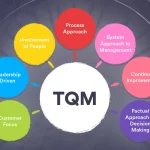Step 1: Understand Entry Level Positions:
Before a candidate begin chasing for any specific job, it should be ensured that he/she understand the specializations which are involved in the technology and explore the options to see what sparks interest.
The following elements and job requirements are usually associated with entry-level IT roles:
- Computer Technician:
Computer Technicians oftentimes have a broad set of responsibilities within an organization before settling down on specializations. As a computer technician, the candidate may work for a company, or may work independently as a contractor or as his/her own computer repair business. Their main tasks will be diagnosing and fixing hardware problems.
- Desktop Support Technician:
Desktop Support Technicians shall troubleshoot everyday problems as their routine tasks. As a Desktop Technician. The incumbents are usually the first to respond to the troubleshooting problems within entities. The candidates may be in-charge of supporting both company employees and customers depending on the business. The common daily tasks shall include troubleshooting wireless or network connections, configuring and testing software, setting up user permissions and formatting devices.
- Help Desk Technician:
As a Help Desk Technician, the incumbent will be in-charge of diagnosing technical problems. As a diagnostician, the candidate may be working with both company employees and customers. While diagnosing a problem, it will be fixed by someone else in the IT Department, but oftentimes these tasks are required to be carried-out by the Desktop Support Technician.
- IT Support Analyst:
IT Support Analysts work to strategically improve company technologies. As a Support Analyst, the candidate will have to predict potential problems and issues with technologies and how companies use those technologies and try to mediate them before they arise. For this job, the incumbent will need to have a very strong understanding of hardware, software and applications.
- Systems Administrator:
As a System Administrator, the candidate will be in-charge of creating and managing all of the networked computer systems in a company. The incumbent will have to adapt technologies to the needs of the company as it grows or changes, and have to stay one step ahead by planning for future technology needs. In day-to-day, the incumbents will be monitoring computer networks, keeping software up-to-date, and maintaining hardware and systems.
Step 2: Debunk Myths about Starting in IT
Let’s get straight to it. The beast of all myths is that the candidates need a college degree to start a career in IT. But in the era of ever-changing technology, that is simply not professional and organized companies like Google have publicly announced that they consider employees with certifications more qualified and no longer require college degrees.
That being said, it doesn’t hurt to have a degree. The best bet is to have both, but the candidate can absolutely get hired in IT solely by earning IT certifications and getting hands-on practice. A college degree will help more in the future with management/leadership type roles within IT, so it’s something to weigh the pros and cons of.
As for starting out, IT managers truly want to see certifications, and more importantly, that the candidates can effectively utilize their knowledge at work. This is where virtual labs offered by an online IT training provider will help them to learn and practice these tasks hands-on.
The second myth the candidates need to shake is that working on or getting into IT has an age limit. If the candidates have the ability to learn new techniques and their work ethic and enthusiasm make them a good culture fit.
Step 3: Become a Life-long Learner
Technology is continually changing, thus, the candidates shall get a strategy in place of how they will manage to cope and stay with the continuous enhancement in the technology as the part of their jobs. Between new cybersecurity breaches daily and advancements in cloud technology or really advancements in almost any technology, a good IT pro always has to stay in the know to be a true asset to a company and the IT team. So, start exploring the best ways to learn new technologies and earn IT certifications constantly.
It’s extremely important to have an action plan before diving into studying. Unlike traditional classroom training, online IT training providers give you the flexibility to study on-demand, at their convenience, if that is something that appeals to them. But the aspirants have to be careful because not all e-learning platforms are the same and they have to ponder the following while choosing one:
- Does the provider focus specifically on IT or is its content diluted with other skill sets?
- Does the provider offer live content or content on the newest certifications or technologies?
- Does the provider have a format to help facilitate the best learning experience possible or are they a voice-over PowerPoint?
- Does the provider offer virtual labs and practice exams for complete mastery?
Step 4: Find the Best Certifications for Beginners
The top three (3) certifications for beginners are CompTIA’s IT Fundamentals+, A+ and Security+, typically completed in that order. Certifications vary in the time it takes to complete them. Check out this ultimate guide to IT certifications for some tips on earning IT certifications.
If the candidate already have a potential specialization or job title in mind, explore the IT certifications that will get him/her there. For example, most Help Desk pros hold CompTIA’s A+ and Net+, as well as project management or IT service management foundation-level certification like ITIL® 4. To top it off, Help Desk pros usually hold the entry-level certification from the systems they support like Microsoft MD-100 for Windows 10 or Apple’s ACSP macOS Support Essentials.
Step 5: Self Confidence and Go for It!
Self-confidence shall make a huge change in life of an individual, the world of IT means many things to many people. Whether it’s a significant pay increase to the candidate, who is seeking, freedom to work remotely or just a new challenge to tackle do it! It may seem intimidating, but take it step by step and firm believe in him/her.
***** End of the Article *****
By:
Mohammad Abdul Khadeer
CGEIT, PMP, CISA, CQA, CSTE, CMMi
Manager – IT Trainings
Engineering Science Institute for Training (Esi)






